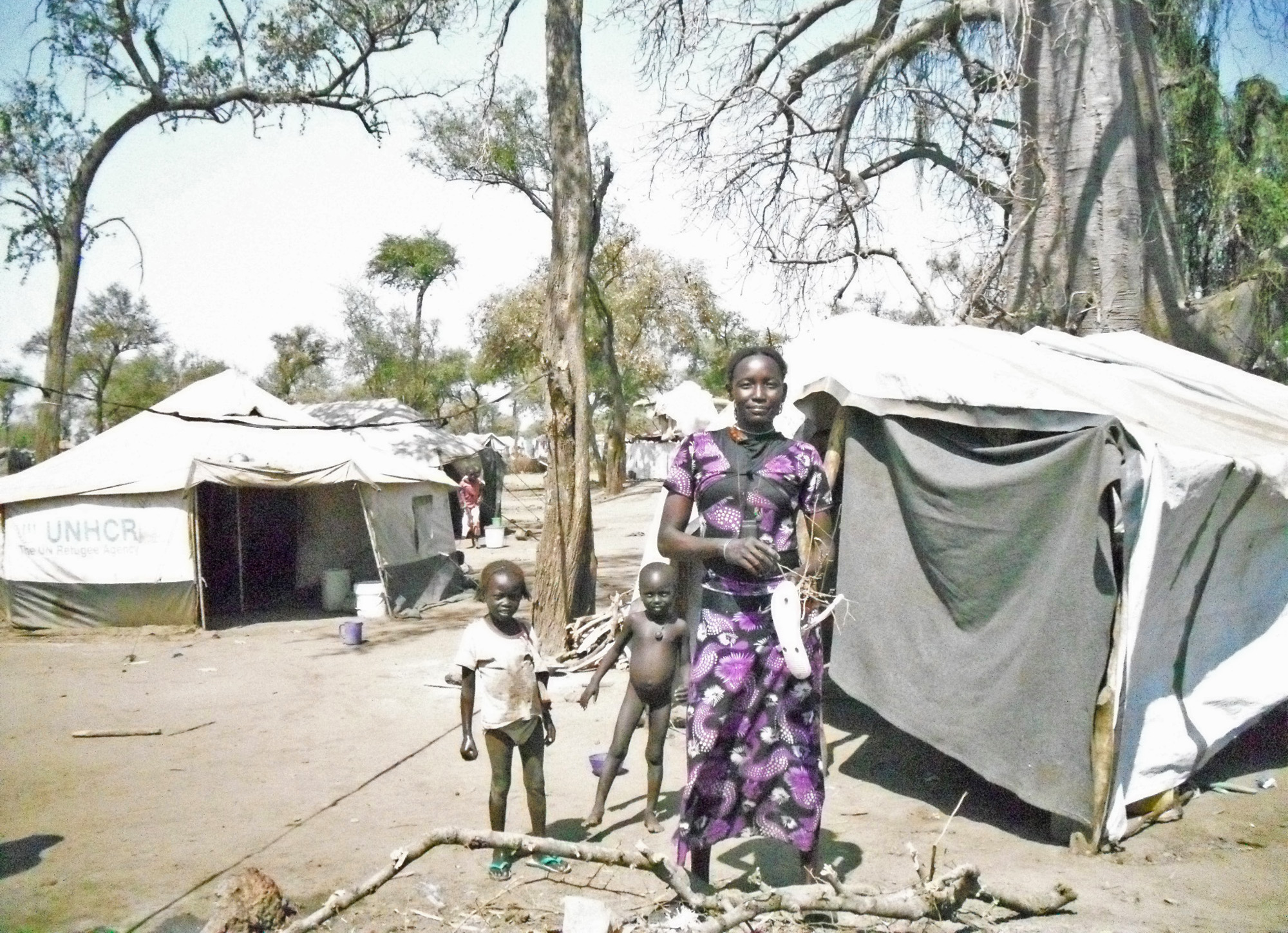The trials of the rainy season - flooded homes and impassable roads - are over. But as the weather changes, and the emergency response transforms into a longer-term humanitarian relief effort, new worries weigh on the minds of refugees and aid workers alike.
“In the dry season there is no water for the animals to drink, and there is no grass to eat,” Khalifa Chapa said, sitting outside his hut in Doro camp, which, with more than 44,000 residents, is the largest of the region’s refugee camps.
Fighting between the SPLA-North and the Sudan Armed Forces began South Kordofan, Sudan, in June 2011. The conflict spread to Blue Nile State in September of that year. It is ongoing, driving refugees like Chapa into South Sudan.
Dying cattle
Four months ago, the 45-year-old father of seven fled Blue Nile State, with 10 cows.
By the time he reached Doro, he had nine; he had slaughtered one for food en route. Now, he has seven. Two of his herd have already died, and the dry season is only beginning.
“The cows are coughing, then they have the diarrhoea. This is reason that they die,” he explained.
Indeed, the number of livestock deaths has risen over the past few months, the UN Refugee Agency (UNHCR) in Maban told IRIN.
In a single week in late December some 300 goats and cattle died, says the mission’s protection officer, Myrat Muradov.
Diseases, such as Rift Valley fever and rabies, are a major cause of livestock mortality; a joint initiative is underway to vaccinate animals.
Limited resources
Lack of food and water is another major cause of death, and a source of conflict.
Humanitarian workers point out that at the end of the rainy season, the grass should be tall. Instead, it is short, making it difficult for refugees and the local community to maintain their livestock herds.
Additionally, the influx of refugees to the region has increased demand for, and decreased supply of, grazing land.
“This is likely to cause tensions between the host community and the refugees over water for the cattle… and over agricultural land, because that’s the last land that could provide food for the cattle,” explained one humanitarian worker in the area who preferred to remain anonymous.
Chapa says members of the host community have killed the cattle of refugees that were found to be feeding on crops. The local community has also demanded money as compensation from the owners of the cows, he said.
“Yes, there have been a few protection incidents. Cattle have been stolen, and refugees have been prohibited from grazing cattle. The host community has to be consulted,” UNHCR’s Muradov told IRIN.
The agency has taken steps to address the problem, establishing in October a host community and refugee relations committee in each of Maban’s four camps.
According to Muradov, temporary solutions have been devised at Batil and Gendrasa camps, with grazing lands identified for refugee use 5km east of the Gendrasa.
“The number of reports of complaints has significantly decreased,” he said.
Muradov says 40,000 to 50,000 animals have already been vaccinated through the programme, conducted jointly through UNHCR, the UN Food and Agriculture Organization, South Sudan Department of Agriculture and Vétérinaires sans Frontières-Germany.
In Doro camp, land for cultivation is a bigger issue than access to grazing for livestock, according to Muradov. But he reports that progress has been made in designating an area where refugees can grow crops, with the agreement of the host community. State authorities in the area have endorsed the initiative, he adds.
Still, “we are at the beginning of the dry season, and the further we go the more challenges we will face,” he said.
Window of opportunity
Humanitarian response teams are gearing up to address the challenges of the months ahead. But they also see the dry season as a window of opportunity.
They had anticipated a resurgence in the arrival of Blue Nile refugees. But that has not happened, and focus is shifting instead to improving services for those living in the camps.
“There has been no big influx as anticipated,” Muradov said. “People are trickling through the border; 340 persons have arrived since the contingency [plan] was activated three weeks ago. For now, we have over 112,000 refugees here, and we need to look into ensuring their longer-term needs.”
Central among those needs is the relocation of refugees from UNHCR tents, which serve as emergency shelters, to more permanent dwellings. Schools and hospitals also need to be upgraded to semi-permanent and permanent structures.
The NGO GOAL, which runs sanitation and health projects in three of the county’s camps, plans to install 1,500 household latrines in Batil camp before the rains return and interrupt construction.
“Given the rains and flooding, sites may become inaccessible and latrine pits can collapse during excavation,” said Evelyn Moorehead, GOAL’s emergency coordinator.
The dry season also presents an opportunity to import materials by road; the rains typically sever road access to Upper Nile County, forcing budget-strapped aid agencies to fly supplies in.
“Flying up bulky and heavy inputs such as diesel in private aircraft is significantly more expensive than driving it up during the dry season,” Moorehead said.
nff/rz
This article was produced by IRIN News while it was part of the United Nations Office for the Coordination of Humanitarian Affairs. Please send queries on copyright or liability to the UN. For more information: https://shop.un.org/rights-permissions




